What Is Going On?
"Waiting for summer? I'm still waiting for
spring!" my wife mumbled. A lot of mumbling & grumbling lately. In
fact I can't hear you right now because I've gotten a non-stop earful.
I honestly can't remember a faux-spring so depressing.
It's green, the drought is history, there's water in the lakes!
"Shut it Paul".
Why? Proving cause and effect is tricky, but I
still think this tortured weather pattern may be linked to record
melting in the Arctic last fall - which seems to have thrown the jet
stream out of alignment. A 2012 research paper by Francis & Vavrus
shows a 14 percent drop in the speed of upper level winds since 1979 as
far northern latitudes warm up the fastest. is this sparking
"amplification", big north/south swings, with weather systems moving
much slower, magnifying the potential for flood drought? It's a theory,
but it underscores my sense that we're in uncharted waters.
Climate change is flavoring all weather now.
Clouds and sprinkles linger today, lukewarm sun
Friday and the first half of Saturday. Showers and T-storms arrive late
Saturday and spill over into Sunday. I find that shocking.
Long-range models still hint at a real warm front (90+ F hot front?) in about 7-9 days.
* image above: Brad Birkholz.
The First Tropical Storm Of The Season, And "Hurricane Apathy".
The last major hurricane to strike the USA? Wilma, back in 2005. We are
long overdue for a major strike, and I have a hunch this is going to be
a very busy year for hurricanes in the Atlantic basin. Details in
Climate Matters:
"
WeatherNationTV Chief Meteorologist looks at Andrea the first storm of
the 2013 Atlantic Hurricane Season. More details on hurricane apathy and
the storm that got him interested in meteorology."
*
First Tropical Storm of the 2013 season (Andrea). 40 mph sustained winds may strengthen to 50-55 mph before landfall over Florida's Big Bend Thursday afternoon.
*
Tropical Storm Warning Gulf Coast of Florida, Tropical Storm Watch coastal Georgia and Carolinas.
*
Greatest risk from Andrea is inland flooding;
greatest potential for urban/river flooding Tampa to Panama City and
Destin, then inland over Georgia and Appalachian communities from
Chattanooga to Asheville, Roanoke, Hagerstown, Altoona and State
College, where some 4-6" rainfall amounts are possible by Friday night.
*
3-4 foot storm surge predicted for Clearwater Beach by late morning Thursday, capable of minor to moderate coastal flooding and beach erosion.
*
3 foot storm surge in Lower Manhattan (Battery) by Friday evening as a weakened Andrea accelerates right up the coast.
Landfall. Andrea may strengthen further before
reaching the lightly populated Big Bend coast of Florida, well north of
Tampa. Tropical storm force (40-50 mph) winds will extend inland to
Ocala, Gainesville and Tallahassee tomorrow, capable of minor damage.
Map above: Ham Weather.
Model Agreement. All the models we examine at
Alerts Broadcaster show strong continuity, with landfall near Crystal
River or Cedar Key. Andrea is meandering along at 3-5 mph, but
prevailing steering winds will pick up the storm and accelerate it up
the East Coast, which will help to avoid a worst-case rainfall scenario
for the Mid Atlantic Region and New England. Model guidance: NHC and
Ham Weather.
Current Watches/Warnings. NOAA has issued Flash
Flood Watches for central and northern Florida, as well as
southern/eastern Georgia and coastal South Carolina. I expect Flash
Flood Watches and Flood Warnings to be issued farther inland, across
much of the Southeast, tomorrow. Map: Alerts Broadcaster.
Storm Surge Outlook At Clearwater Beach, Florida. A
peak surge of 3.5 to 4 feet at Clearwater Beach late morning Thursday,
coinciding with high tide, will create minor to moderate coastal
flooding and some lowland inundation.
Latest Rainfall Predictions. It appears the
greatest potential for inland flooding (urban and river) is from
Florida's Panhandle into much of western and northern Georgia
(including metro Atlanta) to Chattanooga, Asheville and the Shenandoah
Valley of Virginia (including Roanoke and Lynchburg). Some 5" rainfall
amounts falling in less than 24-30 hours will lead to flooding of poor
drainage areas, and some smaller rivers will spill out of their banks.
Tropical moisture interacting with the Appalachians will create locally
heavier amounts, and I can't rule out mudslides and power outages at
the height of the storm Thursday night and Friday. Map above: Weather
Bell.
Northeast: Biggest Soakings Inland. Models show
continuity keeping the plume of heaviest rain inland, with lesser
amounts near the heavily populated urban core from D.C. to
Philadelphia, New York and Boston. Some 4-5"+ amounts from Hagerstown
and Altoona to State College and Wilkes-Barre will result in flash
flooding. Facilities that often experience flood-related problems should
be on high alert; heaviest rains coming Friday midday into early
Saturday. This will be a short-duration "burst" of very heavy rain as
Andrea accelerates northeastward. Map: Weather Bell.
Timing Andrea. The ECMWF solution above shows
landfall by Thursday evening over Florida's Big Bend, the center of a
weakening tropical storm near Wilmington, North Carolina by midday
Friday. The center of the storm passes closer to New York City by
Friday evening (heaviest rains late afternoon into the overnight hours
Friday), and then the remains of Andrea push rapidly northeast, already
off the coast of Portland, Maine by midday Saturday. Maps above: WSI.
Minor Flooding For Metro New York. SLOSH models
show a 3 to 3.5 foot surge at Manhattan's Battery Friday evening, at
the height of the storm. Winds in New York City may reach 30-35 mph
with very heavy rain falling over a 6-12 hour period late Friday and
Friday night.
Let me say this again: warm sea surface temperatures, a lack of El
Nino shearing winds over the tropics, and a persistently negative NAO
(North Atlantic Oscillation) all point to a
much busier than average hurricane
season. With a negative NAO the Bermuda High tends to set up much
closer to Florida, nudging Atlantic storms closer to the USA. The fact
that we're seeing a tropical storm in early June may be a strong signal
of an active 2013 hurricane season to come.
The last major hurricane to strike the USA was Wilma in 2005. We are long overdue for a Category 3+ landfall. The Boy Scouts have it right: "be prepared".
Summary: Andrea continues to strengthen (slowly)
and reaches Florida's Gulf Coast as a moderate tropical storm Thursday
afternoon or evening. As we've been saying for a week now inland
flooding poses the greatest risk from this storm, especially over the
hilly terrain of the southeast from northern Georgia to Asheville.
Minor to moderate coastal flooding is expected in the
Tampa/Clearwater/St. Petersburg market Thursday, a minor storm surge
from Savannah and Hilton Head to Charleston and the Outer Banks. New
York Harbor and Long Island Sound will experience minor flooding with a
3 foot storm surge by Friday evening.
Some people minimize tropical depressions and tropical storms, but
this can be a dangerous oversight. Some of our worst inland floods have
been sparked by dying, slow-moving tropical storms interacting with
mountainous terrain, which accelerates rainfall amounts and the
potential for serious flooding. Andrea should move quickly enough to
avoid severe or historic flooding, but I anticipate widespread flash
flooding from the Panhandle of Florida across Georgia and the western
Carolinas, with swollen rivers and urban flooding possible into Maryland
and interior Pennsylvania by Friday afternoon. Minor flooding from 1"+
rains may slow traffic (land and air) from D.C. to New York and Boston
Friday PM into Saturday, with conditions rapidly improving along the
eastern seaboard by Sunday.

A Warm Light At The End Of Our (crummy) Tunnel?
I sure hope so. I know we keep pushing back the warm air; Mother Nature
teases us with a possible warm front, only to have the warmth evaporate
and pass well south of Minnesota. Is next week's ECMWF prediction of
70s and 80s real? I suspect so - but I'm not holding my breath just yet.
I also wanted to highlight Sunday as the wetter day of the weekend, the
best chance of rain morning hours.
A Hot Front Next Weekend? We're
due, and the ECMWF (European) model shows a prod of hot air surging
across the Rockies and Plains 8 days from now, possible setting the
stage for shorts and sunglasses the weekend of June 15-16. Wouldn't that
be nice.
Serious Weather Whiplash. Oh to be a barge operator
on the Mississippi. As recently as February barge traffic was slowed and
re-routed, due to record low water levels on the Mississippi River. Now
we've swung 180 degrees to severe flooding, most recently shutting down
barge traffic around St. Louis. Details from Climate Central:
Tracking Andrea. The NAM model shows landfall over
the Florida Panhandle later today, the storm accelerating northeastward,
soaking a wide swath of the East Coast from tonight into Saturday
night. Loop: NOAA.
A 'Tornado Sense' Could Save Your Life
By Eric Waage, Hennepin County Emergency Management Director
Guest Post.
From time to time I include longer-form narratives from people I know
(and trust). I still worry about tornado-apathy and warning-fatigue in
the Twin Cities metro area, a sense "it can't happen here" is still
pretty prevalent. The last EF-4 tornadoes were 1965 in the immediate
metro; since then the population has nearly tripled, so has the size of
the metro. What was farmland 10-20 years ago is now subdivisions; when
the next big tornado does touch down the damage will be extensive.
Here's a guest post from Eric Waage, Hennepin County Emergency
Management Director.
"The deadly start to the 2013 tornado season is a
wake-up to all of us who live in tornado prone states. It also is a
call to develop a strong tornado sense. Weather awareness and
preparation for the worst doesn’t cost money or take much time. But
tornado sense can increase your odds of survival. Tornado sense can
save your life and the lives of loved ones, friends, workmates and
employees.
Dedicate 10 minutes each spring to prepare your mind for another tornado season. Then,
take one minute each month to mentally practice the actions you would
take, at home, at work or at school, if a tornado hit. Finally, take a
few seconds each day to be aware of the weather conditions and your
surroundings. If you read this entire article, you are well on your way
to becoming someone who will make the best decisions possible under a
tornado threat.
Tornado sense has five parts:
* Be aware of weather conditions.
* The best
survival stories are the ones you’ll never see in the paper, such as:
“Family saved by deferring boat trip due to severe weather forecast.”
* Check
forecasts daily during tornado season (May-August), and be prepared to
adjust your plans. If even a small chance of thunderstorms is forecast
for your area, check updated weather forecasts several more times during
the day. Free resources for weather information include the Twin Cities
National Weather Service at
www.crh.noaa.gov/mpx,
the continuous weather stream on TPT WX television (KTCA Digital 2.4
and via select cable providers) and some radio and TV stations.
* When thunderstorms start to pop up, check their movement on radar frequently. See
if the storm is becoming violent on its way to your location by
checking nearby counties for severe thunderstorm and tornado warnings.
Staying connected with the weather situation will prevent dangerous
surprises.
* Know your location. As you listen to reports of tornado movement, knowing your location can save your life.
Understanding forecasts and reading radar
requires knowledge of basic geography. Cities are generally the smallest
areas used for severe weather warnings. More commonly, forecasters will
narrow warnings only to the county level. It is simply not possible to
name individual neighborhoods, schools, stores and golf courses that are
at risk.
As you travel your region for work, shopping or
recreation, read the signs along the road so you know when you have
passed into another city or county. Do this often enough and you will develop a sense about where you are at all times.
It is also important to be able to identify where you are on a map. Use a highway map to locate the places where you and your loved ones live, work and frequent. You
should become able to identify your location on a radar map just by
seeing your county’s shape. Radar maps often only show county
boundaries, large cities and sometimes major highways. Learn city and
county names, and learn how to place locations within county boundaries.
Understand warnings.
A tornado warning is actually the last stretch
of a long trail of clues that should prepare you for action. A tornado
sense mindset means that you are forewarned and ready to act. Most
killer tornado conditions are forecast days in advance and should come
as no surprise. A few days in advance of when severe weather is
expected, the National Weather Service issues a large-scale and very
general Hazardous Weather Outlook. Several hours in advance of the
expected violent weather they will issue a watch, narrowed down to
county level. A watch means that weather conditions seem right for the
development of tornadoes. This is your last notification to be ready to
act if you hear a warning.
When tornadoes are seen by trained spotters or
by radar, then a tornado Warning is issued for specific areas. A warning
usually offers about 10 minutes’ notice before a tornado, but it can be
much less time. When a warning is sounded for your area, you must take
immediate action.
If you are outside you may hear sirens, if they are installed in your area. Outdoor
warning sirens sound for three minutes in a steady tone during a
warning. All metro area counties sound sirens for tornado warnings. Most
also sound their sirens when straight line winds approach hurricane
force at 70 mph or more. Know your county’s siren policy, as well as
those of the counties you frequent.
There are many other warning methods. Among the very best warning tools is a NOAA Weather Radio that constantly monitors for broadcast warnings.
Local television stations will usually provide weather captions on their screens. Only
a few radio stations provide weather warning services; many broadcast
automated programming and are managed elsewhere. WCCO AM (830) and
Minnesota Public
Radio network (FM 91.1 and many others) are
among those who reliably broadcast weather warnings. Several, free or
low cost smart phone apps will alert you to severe weather. Learn more
at
www.weather.gov/subscribe.
People with qualifying mobile phones can get automatic calls from the
National Weather Service when a tornado warning is issued.
Many digital commercial billboards also will provide tornado warnings in the Twin Cities area.
Choose good shelter. Despite
our technological advances, it is your shelter choice that most
determines your survival. Experience tells us that you should be in a
small, windowless interior room on the lowest level of a structure for
the best shot at survival. Know where these spots are located in your
home, workplace, school and other places. If you are in unfamiliar
surroundings during a tornado risk day, look around for places that
might offer good shelter. Cars,
boats and mobile homes are not good shelter. Sometimes, there will be no
good alternative for shelter, and that’s where tornado sense could have
kept you out of a dangerous situation.
Accept the facts. To develop a tornado sense mindset also requires a reality check. Know this:
* Adequate warning is there for those who listen. In almost every case of a killer tornado, there were days of indications, hours of alert time, and many minutes of warning.
* Outdoor
warning sirens are not ‘always going off.’ Monthly tests plus the annual
average of just over one siren activation for storms in Hennepin
County, adds up only 27 minutes a year.
* Finally,
there is not a single spot in Minnesota where a tornado cannot hit.
Weather that spawns tornadoes rises miles into the sky and releases huge
amounts of energy. These forces are far too big to be directed by a
river valley, hilly terrain, hot pavement or tall skyscrapers.
Thunderstorms produce many deadly hazards in addition to tornadoes
(lightning, hail, extreme winds, flooding).
If you have a healthy tornado sense mindset, you and your loved ones will be well-prepared to weather any storm."
Infrared Light Reveals Tornado's Path. Here's a fascinating post about the May 20, 2013 Moore EF-5 from
NASA: "
On
May 20, 2013, central Oklahoma was devastated by a EF-5 tornado, the
most severe on the enhanced Fujita scale. The Newcastle-Moore tornado
killed at least 24 people, injured 377, and affected nearly 33,000 in
some way. Early estimates suggest that more then $2 billion in damage
was done to public and private property; at least 13,000 structures were
destroyed or damaged. It was the deadliest tornado in the United
States since an EF-5 event killed 158 people in Joplin, Missouri, in
2011. On June 2, 2013, the Advanced Spaceborne Thermal Emission and
Reflection Radiometer (ASTER) on NASA’s Terra satellite observed the
scar of that tornado on the Oklahoma landscape. In this false-color
image, infrared, red, and green wavelengths of light have been combined
to better distinguish between water, vegetation, bare ground, and human
developments. Water is blue. Buildings and paved surfaces are
blue-gray. Vegetation is red. The tornado track appears as a beige
stripe running west to east across this image; the color reveals the
lack of vegetation in the wake of the storm..."
Second Deadly Tornado That Hit Oklahoma Upgraded To Rare EF5; 2.6 Mile Width Widest Ever Recorded. Here's a clip from a
Star Tribune summary: "...
The
update means the Oklahoma City area has seen two of the extremely
rare EF5 tornadoes in only 11 days. The other hit Moore, a city about
25 miles away from El Reno, on May 20, killing 24 people and causing
widespread damage. But Friday's massive tornado avoided the highly
populated areas near and around Oklahoma City, and forecasters said
that likely saved lives. When the winds were at their most powerful, no
structures were nearby, said Rick Smith, chief warning coordination
meteorologist for the weather service's office in Norman. "Any house
would have been completely swept clean on the foundation. That's just
my speculation," Smith said. "We're looking at extremes ... in the rare
EF5 category. This in the super rare category because we don't deal
with things like this often..."
Photo credit above: "
A storm develops just before it
produced a tornado near El Reno Okla. just south of Interstate 40 on
Friday May 31, 2013. Several tornadoes in the area caused damage and
injuries." Photo: Chris Machian, ASSOCIATED PRESS.
El Reno EF-5: A Game-Changing Tornado? I can't
remember a tornado that had the entire nation talking, arguing and
debating. Friday night's monster multi-vortex tornado threw a spotlight
on local TV meteorologists, and the words they choose to communicate
risk. Is there ever a good time to encourage viewers to leave their
homes and hit the streets? Probably not. And the 296 mph estimated wind
speed came not from tracking damage and debris, but from a local
Doppler radar on the scene. I've never heard of an EF-estimate based on
Doppler vs. damage. Today's edition of
Climate Matters focuses on the El Reno tornado, and the mechanics and physics behind tornadogenesis.
El Reno - Union City Tornado Widest On Record. More remarkable details, maps and videos focused on Friday evening's monster from
kfor.com; here's an excerpt: "
The
National Weather Service has just upgraded the May 31 El Reno, Union
City tornado to an EF-5 with a width of 2.6 miles wide, making it the
widest tornado ever documented. EF-5 is the highest possible rating for
tornadoes on the Enhanced Fujita scale. The upgrade was based on
information from OU RaxPol Doppler data or mobile radar data, that
measured low level winds of 296 miles per hour. The National Weather
Service said some of the subvortices had a forward movement of up to 180
miles per hour. This tornado is double the width of the May 20 tornado in Moore, Oklahoma.
The F-4 Wilber-Hallam, Nebraska, tornado May 22, 2004 was the
previous record holder for the widest tornado on record at 2.5 miles
wide..."
Oklahoma Storms: Amateur Storm Chaser Took Photo Of Tornado That Killed Him. Morbid? Yes, but everyone needs to grasp the inherent dangers of chasing tornadoes. Here's an excerpt from
newsok.com: "
From
his pickup, amateur storm chaser Richard Charles Henderson took a
cellphone photo of the first tornado Friday and excitedly sent it to a
friend. Minutes later, that tornado would kill him. “That was the end
of his life right there,” said the friend, George “Sonny” Slay. “He
said, ‘I'm having fun,'” Slay recalled Monday. “He told me he was
riding around … chasing the storms …. I said, ‘You better quit that!'
“And, then, I guess he was en route to the position that he got in
because he said, ‘There goes Channel 9!' He said, ‘You might even see
me on TV.' And, then a few seconds later, he said, ‘Oop, there's
Channel 5!'”
Photo credit above: "
Amateur tornado chaser Richard
Charles Henderson sent this cellphone photo of a tornado to a friend
minutes before the tornado killed him. The friend, George "Sonny" Slay,
provided the photo to The Oklahoman."
"
Get As Low As You Can And Put As Many Walls As You Can Between You And The Tornado."
Possibly the best advice anyone can give in the wake of two EF-5
tornadoes in 11 days in Oklahoma. Here's an excerpt from a great Harold
Brooks NSSL guest post at
Living In The Real World: "
...Occasionally,
someone strays from this basic messaging, potentially causing
problems. Many in the tornado safety community are concerned about an
inappropriate message that seems to have become very popular recently,
but that differs significantly from the basic safety idea. Some
broadcast meteorologists have offered the advice that “if you don’t get
underground, you won’t survive.” Sometimes, it’s couched in terms of
“this tornado is so severe, the usual advice doesn’t work” or “you
can’t survive an EF5 above ground.” The message suggests that even
in-residence shelters built to the design specifications of the Texas
Tech wind engineering groups and the FEMA standards won’t survive. This
advice is wrong and providing it is irresponsible at best, and
dangerous at worst. As a factual statement, claiming that EF5 tornadoes
can’t be survived above ground is wrong. After the 3 May 1999 tornado
that hit Moore, Oklahoma, survey work indicated that 1% of people who were in houses that were rated F4 or F5 were killed, as reported by Hammer and Schmidlin..."
Photo credit above: "
People arrived at Fred and JoAnn
Horn's home to help in their salvage efforts, Saturday, June 1, 2013 in
El Reno, Okla. . He is a retired state trooper and now serves as a
deputy for the Canadian County Sheriff's Department. Their home was
heavily damaged in Friday night's tornado. More than two dozen family
members, church friends and neighbors came to the Horn's home to
help recover items that can be saved." (AP Photo/The Oklahoman, Jim Beckel)
RaXPol: Doppler Envy. I'd love to mount one of these
on the top of my truck - not sure my wife would approve. Here's an
excerpt of a fascinating post (and video) from Robin Tanamachi at
tornatrix.net: "...
One
might expect the entire truck to wobble with a giant antenna swinging
around on its bed. The engineers addressed that issue from the design
stages. As can be seen in the video clip, the entire truck remains
surprisingly static, even without the hydraulic levelers deployed.
Seasick crew members will not be an issue. And as for the problem of
“beam-smearing” (insufficient dwell time) that might result from such a
rapidly rotating antenna, the engineers implemented a multi-frequency
Tx/Rx system. Conventional Doppler radar transmits pulses a single
frequency, then “listens” for the echo of the transmitted signal.
Imagine someone striking a single piano key, then listening for the
echo of that note. In contrast, RaXPol transmits consecutive pulses at
slightly different frequencies, then listens for the returned signal
from all of them simultaneously. In the piano analogy, instead of
striking only one key, you would sweep your fingers over several keys,
then listen for the combined echoes of all the different notes. Dr.
Andy Pazmany explains in this presentation how this “frequency hopping” technique works..."
How Storm Chasers Have Made Tornado Alley Safer.
I have no beef with storm chasers - they provide the "ground truth" that
Doppler radar doesn't. They've saved countless lives in recent decades
and contributed to a large and growing body of science. It's just
gotten a little out of control, to the point where there are SO
MANY chasers that it makes it safe for everyone, with traffic snarls
that can make it dangerous, even deadly for everyone else. There's no
easy answer here, but at least people are talking about this. In the
end I hope cooler heads and reason will prevail. Here's an excerpt of a
post from Andrew Revkin at
The New York Times: "
Here’s a “Your Dot”
contribution exploring the surprising mix of factors — including data
gathered by storm-chasing scientists — that have steadily made
America’s tornado hot zone a safer place, despite the meteorological
hazards that are a fact of life there. The piece, building on the discussion that has followed the deaths of three storm chasers in a powerful Oklahoma tornado last Friday, is written by Mike Smith, an entrepreneurial (and blogging) meteorologist focused on extreme weather. Smith is also the author of “Warnings: The True Story of How Science Tamed the Weather,” an engaging history of how individuals fought institutional inertia to improve severe-weather warnings..."
Image credit above: "
This May 21, 2013 file aerial photo
shows the remains of houses in Moore, Okla., following a tornado the
May 20, 2013 tornado. The Oklahoma City area has seen two of the
extremely rare EF5 tornadoes in only 11 days. The tornado that hit El
Reno had a record-breaking width of 2.6 miles. The one in Moore, a city
about 25 miles away from El Reno, killed 24 people and caused
widespread damage." (AP Photo/Kim Johnson Flodin, File)
Storm Chasers: Rapidly Moving Targets. Here's a remarkable
YouTube clip
showing the relative motion of the El Reno EF-5 with storm chasers
nearby - trying to stay out of the direct path. As the tornado occluded
and weakened it veered to the left (northeast), catching some offguard
with tragic consequences. When you watch the animation it looks like a
potentially deadly game of Frogger. Here's an explanation:
An
animation showing the approximate location of the El Reno tornado, with
chaser positions overlayed. Tornado path and size based on radar and
path compiled by NWS. Chaser positions from Spotter Network."
Perspective. A 2+ mile wide tornado is unimaginable, but
MAPfrappe.com
has a tool that lets one superimpose a tornado track on any metro
area. Sometimes people don't get the message until/unless they see it
in the perspective of their hometown. The El Reno EF-5 would have
touched down near Wayzata, destroying major portions of Minnetonka,
Hopkins, the Inner Lakes and South Minneapolis before occluding and
dying out over downtown Minneapolis.
Tornado Spike. After a very slow start to the 2013
tornado season a persistent southward dip to the jet stream has created a
sudden flurry of tornadoes, with a disproportionate number of violent,
EF-3+ tornadoes in the last 2 weeks. Graph: NOAA SPC.
Severe Storms Bring More "Weather Whiplash" to U.S. From
flood to drought, back to flood, with a few EF-5 tornadoes thrown in
for good measure. Residents of Oklahoma must be both traumatized and
confused. Meteorologist Andrew Freedman has the story at
Climate Central; here's a clip: "...
The
extreme swings in precipitation may be connected, in part, to climate
change, since the atmosphere is now carrying more moisture than it
used to due to warming air and ocean temperatures. Climate studies
have projected that precipitation extremes will become more frequent
and severe, and some studies have already found an increase in heavy precipitation events across the Northern Hemisphere and in North America, including in the Midwest. Other studies have found that climate change is increasing the odds for certain extreme rainfall and flooding events..."
Top 10 Cities At Risk From Hurricane Damage. Number one on the list: Miami. Here's an excerpt from
CBS News: (MoneyWatch) "
Storm
surge damage from a hurricane or tropical storm can devastate a city,
leaving destroyed homes, standing water and debris in its wake, miles
away from any coastline. This year, more than 4.2 million homes are
at risk from storm surge, which could cause more than $1 trillion in
damage, according to a recently released storm surge report by
CoreLogic, a property analysis and data firm. Vulnerability is so
widespread that more than 75 percent of major cities could be
underwater after a major storm..."
Photo credit above: Shutterstock. "
The gem of Florida's
long eastern coast faces -- not surprisingly -- the greatest risk of
damage, with 615,756 homes susceptible to flooding caused by
hurricanes. About 25 such storms have struck the city in the past
century. The city's location near the tip of Florida makes it highly
vulnerable."
Worrying "Hole" In The Sun Is The Biggest Spotted By NASA In Over A Year.
We are rapidly approaching a peak in the sunspot cycle, and the
potential for large, potentially damaging solar flares. Here's an
excerpt from
Huffington Post UK: "
A giant hole has been discovered in the Sun - and it's heading our way. The giant gaping coronal gap has been described by Nasa
as "extensive", "rotating our way" and bigger than anything they have
seen in over a year. Not to worry though, the only effect it will have
on Earth is an increased chance of observing aurora, which is nice. As NASA explains: Coronal holes are the source of strong solar
wind gusts that carry solar particles out to our magnetosphere and
beyond. They appear darker in extreme ultraviolet light images (here, a
combination of three wavelengths of UV light) because there is just
less matter at the temperatures we are observing in..."
Negative NAO: Amazingly Persistent Pattern. A
strongly negative North Atlantic Oscillation correlates with big
north/south swings in the jet stream, frequent intrusions of Canadian
air capable of spinning up flooding rains and tornadoes. Last year at
this time the NAO was strongly positive, meaning powerful west to east
winds, keeping cold air bottled up over Canada, resulting in record
warmth. A strongly negative NAO also increases the potential for
Atlantic hurricanes hitting the USA (with a Bermuda high closer to
Florida - steering storms toward the Caribbean and Gulf).
What Is That Mystery Blob On Doppler? Skies were
clear - this was not rain (or AP). But what else could it be? Cue the
conspiracy theories - probably military-related "chaff". Here's a clip
of a post at WAAY-TV 31's
Tennessee Weather Blog: "...
But I have a best guess… I think it’s some new kind of yet-to-be unclassified military chaff.
Chaff is basically consists of tiny, highly reflective particles
(often aluminum) which are sprayed from aircraft or naval ships to defer
missiles from their target by creating false returns on radar. The
product you’re looking at above is “reflectivity,” and it has high
values (highly reflective to radar beam).. too high to be smoke, but
about right for chaff..."
What Happened To Tank Man, China's Most Famous Tiananmen Square Protestor? Here's an excerpt of an interesting follow-up story at
Quartz: "
A
day after Chinese military killed at least hundreds, if not thousands
of demonstrators in Beijing in 1989, a wiry man in a white shirt
stepped in front of a line of moving tanks near Tiananmen Square and
become one of the most famous protesters of the 20th century.
Twenty-four years later, his identity is still a mystery. He is called
simply Tank Man. Today, on the anniversary of the crackdown, Chinese
bloggers paid homage to him
with imitations of the face-off. The man blocked the path of the
tanks, even as they gunned their engines. He climbed onto the first
tank, pounded on the hatchet, and appeared to speak to the soldiers
inside. When he stepped back down in front of the tank, two men ran
into the street and pulled him away. The confrontation became one of
the most enduring images of the pro-democracy, anti-corruption protests
that swept China that spring and summer..."
Photo credit above: "
A Chinese man blocks military tanks on Changan Avenue, near Tiananmen Square in Beijing, June 5 1989." AP Photo / Jeff Widener
WeatherNation TV Launches in Denver. KUSA-TV is one
of the premiere local TV news operations in the nation with a stellar
reputation for journalism and quality reporting. They also happen to
have an amazing team of meteorologists, with Kathy Sabine leading the
charge. Speaking on behalf of the entire team - we're very proud to be
working with the Channel 9 weather team to bring the most comprehensive
meteorological coverage to Denver and all of Colorado. Details from the
Denver Post.
61 F. high in St. Cloud Wednesday.
74 F. average high for June 5. Ha!
84 F. high on June 5, 2012.
.57" rain fell on the STC metro yesterday.
TODAY: Cool and gray, a few sprinkles. Winds: NE 10. High: 61
THURSDAY NIGHT: Partly to mostly cloudy, a touch of ground fog. Low: 48
FRIDAY: A rare sunshine sighting? Nicer the average. High: 70
SATURDAY: Better day of the weekend: AM sun, T-showers late. Wake-up: 55. High: 72
SUNDAY: Rain tapers, drier by late PM. Wake-up: 54. High: 67
MONDAY: Partly sunny, lukewarm. Wake-up: 51. High: 75
TUESDAY: Intervals of warm sun. Finally. Wake-up: 56. High: 74
WEDNESDAY: Isolated T-shower, some PM sun. Wake-up: 55. High: 73
* long range ECMWF guidance is hinting at 80s next weekend (June 15-16), even a shot at 90s. We'll see.
Climate Stories...
Intense T-Storms More Likely To Batter A Warming World.
Although a tornado link is still tentative (and weak), there's little
doubt that a warming atmosphere, with increasing water vapor, will
provide more fuel to power severe local storms. Here's a clip from a
story at
The Daily Climate: "LONDON –
More
intense thunderstorms combined with damaging winds are expected to
occur because of climate change, according to speakers at the seventh
European Conference on Severe Storms being held in Helsinki, Finland.
But because thunderstorms are small in size on the scale of existing
climate models it is not possible to tell whether they will also lead to
more tornadoes and larger size hail – two of the most damaging
problems associated with severe storms. In a warmer world, increases in
surface temperature and moisture create conditions for more frequent –
and intense – thunderstorms, researchers say..."
Photo credit above: "
Storm clouds gather over New Mexico
in 2012. Increases in surface temperature and moisture will likely
increase the intensity of thunderstorms." Photo by
Nicoló Ubalducci/flickr.
Failing Infrastructure Could Cost U.S. Businesses $1.2 Trillion By 2020. Some harrowing statistics from this article at
Triple Pundit; here's an excerpt: ".....
If
Thomas Edison were to come back today, he’d feel right at home with
America’s electrical system because not much has changed in the past
century…” Langford lamented, “…on the East Coast where the electrical
infrastructure was torn apart by Hurricane Sandy, they’re replacing the
old system with exactly the same thing…meanwhile China is putting up
power lines with only a 7 percent loss over 1200 miles. Anybody know
what our system’s loss is over 1200 miles? Eighty percent.” As
utilities prepare to build new power plants, how much money could
consumers save in the long run if greater efficiency in our
infrastructure reduced the number of power plants we use to merely make
up for transmission loss? Brian Pallasch, managing director of the
American Society of Civil Engineers also talked directly about expenses
associated with our aging infrastructure, warning that if we neglect
it as we have, the costs will fall on families to the tune of $3,000
per year in lost time, lost service, more repairs on cars that travel
on pot-holed roads, “Americans use two billion gallons of gasoline just
sitting in traffic...”
Photo credit above:
cumberlandregiontomorrow.org.
Climate Change Causing U.S. Wildfire Season To Last Longer, Congress Told. Congress yawns. But the data is the data; here's an excerpt from
The Guardian: "
America's
wildfire season lasts two months longer than it did 40 years ago and
burns up twice as much land as it did in those earlier days because of
the hotter, drier conditions produced by climate change,
the country's forest service chief told Congress on Tuesday. But the
forest service was forced to make sharp cuts to fire prevention
programmes, and reduce the numbers of fire-fighters and engines because
of budget pressures, Thomas Tidwell, the chief of the United States
Forest Service, told the Senate committee on energy and natural
resources. "Hotter, drier, a longer fire season, and lot more homes
that we have to deal with," Tidwell told the Guardian following his
appearance. "We are going to continue to have large wildfires..."
Photo credit above: "
Americans have increasingly been
building homes in the wilderness, often in areas where fire had been
part of the natural landscape." Photograph: Reed Saxon/AP
"
There Have Been Just As Many Scientific Papers Predicting Cooling As Warming!" Wrong. Here's an excerpt from
Skeptical Science: "
It is a recurring myth that global warming has stopped
and the Earth has begun to cool. This graphic summarizes data that
refutes a related myth that publications now supporting the scientific
consensus that the world is warming due to increased carbon dioxide
were predicting in the 1970s that the world would cool. A survey of
peer-reviewed scientific papers from 1965 to 1979 by Peterson et al. (2008)
shows that few papers predicted global cooling (7 in total), while
significantly more papers (42 in total) predicted global warming. (Also
see the original figure from the paper)..."
Climate Change Keeping Early Birds From Getting Worms: Study. CTV News in Canada has the story; here's an excerpt: "
New
research suggests that climate change is starting to keep early birds
from getting the worms. In a groundbreaking study that wouldn't have
been possible even a few years ago, scientist Kevin Fraser from York
University in Toronto says that shifting seasons due to global warming
have thrown the delicate timing of bird nesting and food availability
out of whack. "Selection has favoured birds arriving at the perfect
time, so they get there right at the peak of insect food, the big flush
of all different kinds of insects we get in spring," said Fraser,
whose paper is published in the online journal PLOS One..."
Photo credit above: "
A magnolia warbler, one of the
most-sought birds on the shores of Lake Ontario this month. One of
dozens of types of warblers to make appearances in trees and bushes
from Oshawa to Hamilton in May."
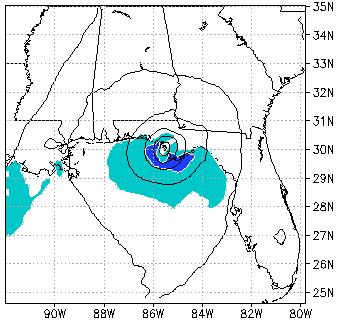
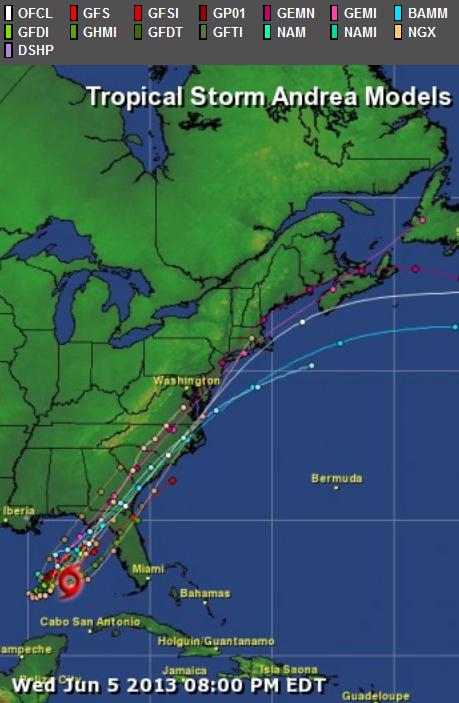
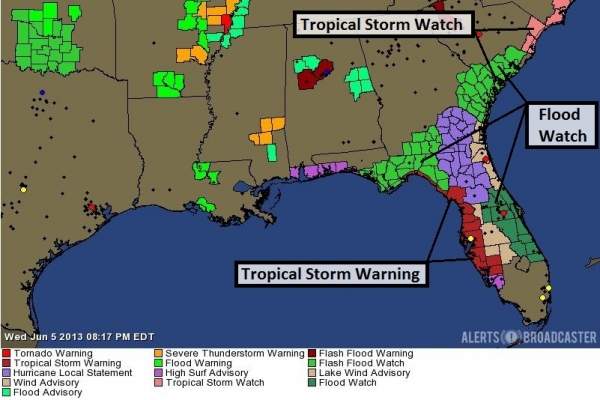
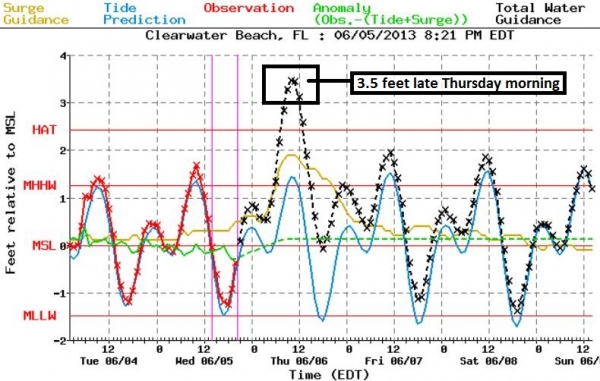
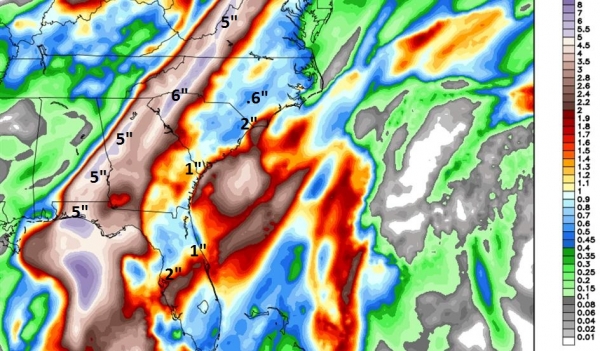
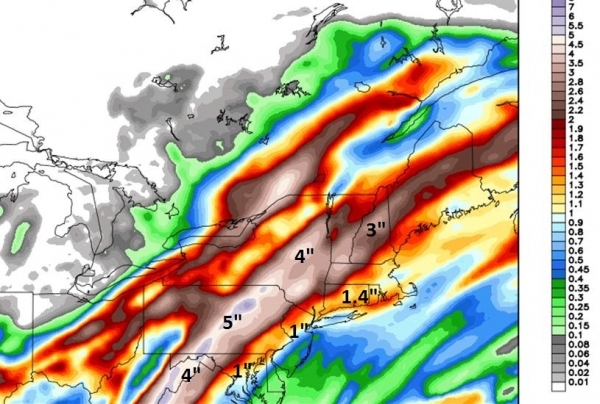
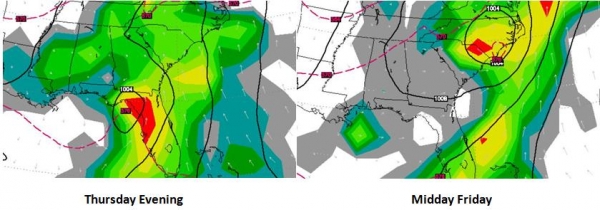
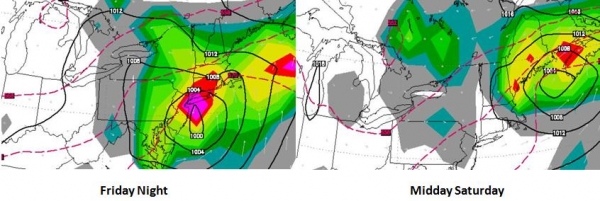
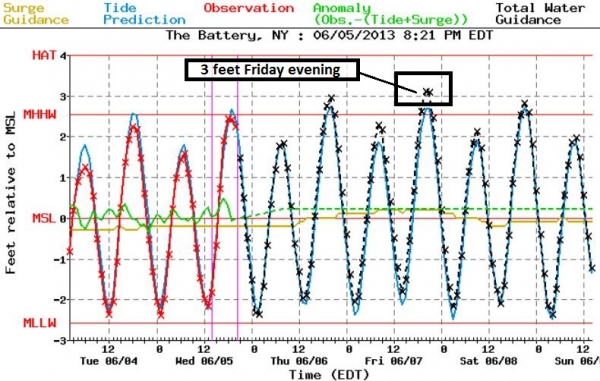
No comments:
Post a Comment